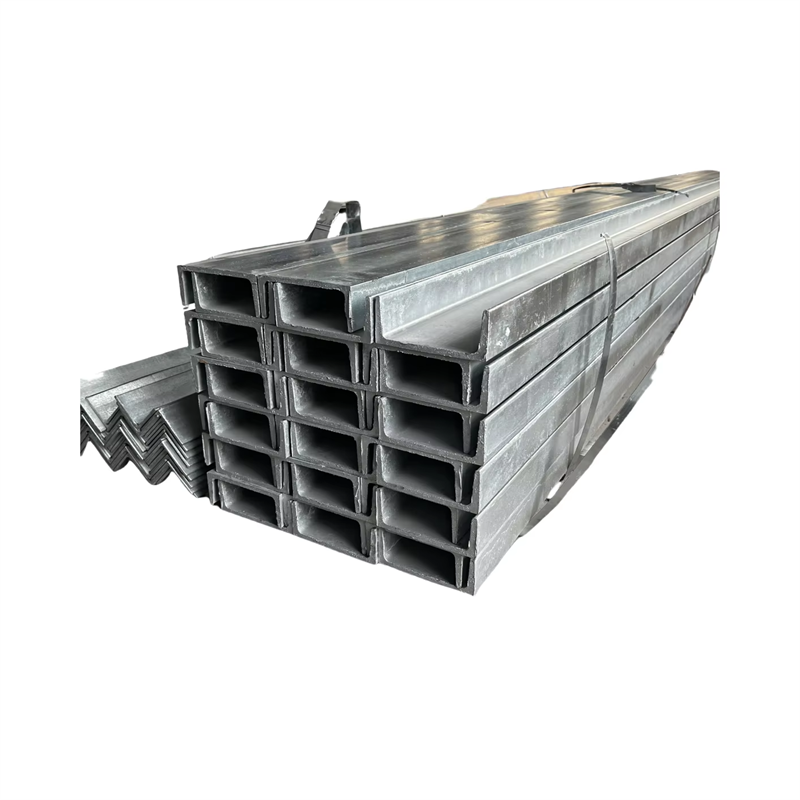
Introduction
In the realm of modern construction and engineering, one material stands out for its exceptional performance and versatility: high-strength profile steel. This remarkable material has revolutionized the way structures are designed and built, offering unprecedented strength, durability, and efficiency. In this blog, we will delve into the fascinating world of high-strength profile steel, exploring its benefits, applications, and the reasons why it is considered a game-changer in construction.
What is High-Strength Profile Steel?
High-strength profile steel refers to steel products that have been engineered to possess superior mechanical properties, such as increased yield strength, tensile strength, and toughness. These properties allow the steel to withstand significant stress and strain without deforming or failing. High-strength profile steel is typically produced through advanced manufacturing processes, including alloying, heat treatment, and controlled rolling.
The Science Behind the Strength
The remarkable strength of high-strength profile steel is attributed to its unique microstructure and chemical composition. By carefully controlling the alloying elements and heat treatment processes, manufacturers can produce steel with a fine-grained microstructure that enhances its mechanical properties. Some key elements commonly added to high-strength profile steel include:
- Carbon: Increases hardness and strength.
- Manganese: Improves toughness and hardenability.
- Chromium: Enhances corrosion resistance and hardness.
- Nickel: Adds toughness and improves impact resistance.
Benefits of High-Strength Profile Steel
1. Exceptional Strength and Durability
One of the primary advantages of high-strength profile steel is its exceptional strength. This allows for the construction of taller, more robust structures that can withstand extreme loads and environmental conditions. The increased strength also translates to longer service life and reduced maintenance costs. Structures made from high-strength profile steel are more resilient to wear and tear, ensuring longevity and reliability.
2. Weight Reduction
High-strength profile steel offers the same or greater strength as traditional steel but with significantly less weight. This weight reduction is particularly beneficial in applications where minimizing dead loads is critical, such as in high-rise buildings, bridges, and offshore platforms. Lighter structures also lead to cost savings in transportation and installation. For example, in the automotive industry, using high-strength profile steel can reduce vehicle weight, leading to improved fuel efficiency and lower emissions.
3. Enhanced Safety
The superior mechanical properties of high-strength profile steel contribute to enhanced safety in construction. Structures made from this steel are more resilient to impacts, earthquakes, and other dynamic forces. This makes them ideal for use in regions prone to natural disasters. Additionally, high-strength profile steel can improve fire resistance, as it can maintain its integrity at higher temperatures compared to conventional steel.
4. Design Flexibility
Architects and engineers appreciate the design flexibility offered by high-strength profile steel. Its ability to be formed into various shapes and sizes allows for innovative and aesthetically pleasing designs. This flexibility opens up new possibilities in architectural and structural design. Complex geometries and slender profiles can be achieved without compromising strength, enabling more creative and efficient designs.
5. Sustainability
Sustainability is a key consideration in modern construction, and high-strength profile steel scores high in this regard. The material is fully recyclable, reducing the environmental impact associated with steel production. Additionally, the reduced weight and longer service life contribute to a lower carbon footprint over the lifecycle of a structure. The use of high-strength profile steel can also reduce material consumption, as less steel is needed to achieve the same structural performance, further enhancing its environmental benefits.
6. Cost Efficiency
While the initial cost of high-strength profile steel may be higher than that of traditional steel, the overall cost efficiency can be superior. The reduced weight and enhanced performance can lead to savings in foundation requirements, transportation, and labor costs. Additionally, the longer lifespan and lower maintenance needs of structures made with high-strength profile steel can result in significant long-term savings.
7. Improved Construction Speed
The use of high-strength profile steel can expedite construction processes. Prefabrication of steel components can be done off-site, reducing on-site construction time and labor. This not only speeds up project timelines but also decreases disruptions at construction sites, leading to more efficient project management.
8. Superior Fatigue Resistance
High-strength profile steel exhibits excellent fatigue resistance, making it ideal for structures subjected to cyclic loading, such as bridges and cranes. This ensures that the steel can withstand repeated stress over time without experiencing failure, thereby enhancing the safety and durability of such structures.
9. Advanced Coatings and Treatments
High-strength profile steel can be further enhanced with advanced coatings and treatments that improve its resistance to corrosion, wear, and other environmental factors. These coatings can significantly extend the service life of the steel, making it even more reliable for use in harsh environments.
10. Versatility in Applications
The versatility of high-strength profile steel makes it suitable for a wide range of applications, from skyscrapers and bridges to automobiles and aircraft. Its adaptability to different industries and requirements underscores its importance as a material that meets the diverse needs of modern engineering and construction.
Applications of High-Strength Profile Steel
High-strength profile steel is used in a wide range of applications across various industries. Some notable examples include:
1. Construction
In the construction industry, high-strength profile steel is used in the design and erection of skyscrapers, bridges, and large infrastructure projects. Its strength and durability make it ideal for supporting heavy loads and withstanding harsh environmental conditions.
2. Automotive
The automotive industry benefits from high-strength profile steel through the production of lighter and safer vehicles. Components such as chassis, frames, and reinforcements are made from this steel to improve crashworthiness and fuel efficiency.
3. Aerospace
In the aerospace sector, high-strength profile steel is used in the manufacturing of aircraft components that require both high strength and low weight. This contributes to improved performance and fuel efficiency in aircraft.
4. Energy
High-strength profile steel is also essential in the energy sector, particularly in the construction of wind turbines, oil rigs, and pipelines. Its ability to withstand extreme conditions ensures the reliability and longevity of energy infrastructure.
A Comparative Look at High-Strength Profile Steel
To better understand the advantages of high-strength profile steel, let’s compare it with traditional steel in terms of key properties:
| Property | High-Strength Profile Steel | Traditional Steel |
|---|---|---|
| Yield Strength | Higher | Lower |
| Tensile Strength | Higher | Lower |
| Weight | Lower (for same strength) | Higher |
| Corrosion Resistance | Enhanced (with alloying) | Standard |
| Formability | Excellent | Good |
| Recyclability | High | High |
| Cost | Higher (initial) | Lower (initial) |
Frequently Asked Questions
Q: How does profile steel differ from traditional steel in terms of composition and properties?
A: profile steel is engineered to have superior mechanical properties, such as higher yield strength, tensile strength, and toughness. It achieves this through a controlled process of alloying elements like carbon, manganese, chromium, and nickel, and specific heat treatments that refine its microstructure.
Q: Why is the reduced weight of profile steel significant for building projects?
A: Weight reduction is crucial because it decreases the dead loads on structures, making them more efficient and cost-effective. Lighter materials reduce transportation and installation costs and allow for the construction of taller and more complex structures without compromising safety or stability.
Q: In what ways does profile steel contribute to the safety of structures?
A: profile steel enhances safety by providing greater resilience to impacts, earthquakes, and other dynamic forces. Its superior mechanical properties mean that structures made from this steel can better withstand extreme conditions, making them safer for occupants and users.
Q: How does profile steel contribute to sustainability in construction?
A: profile steel is highly recyclable, which reduces the environmental impact of steel production. Additionally, its durability and longer service life mean fewer resources are needed for maintenance and replacement, contributing to a lower overall carbon footprint.
Q: What are the primary industries that utilize profile steel, and why?
A: profile steel is commonly used in construction, automotive, aerospace, and energy industries. In construction, it provides the strength needed for skyscrapers and bridges. In automotive and aerospace, it offers weight reduction and improved safety. In the energy sector, its ability to withstand extreme conditions makes it ideal for wind turbines, oil rigs, and pipelines.






